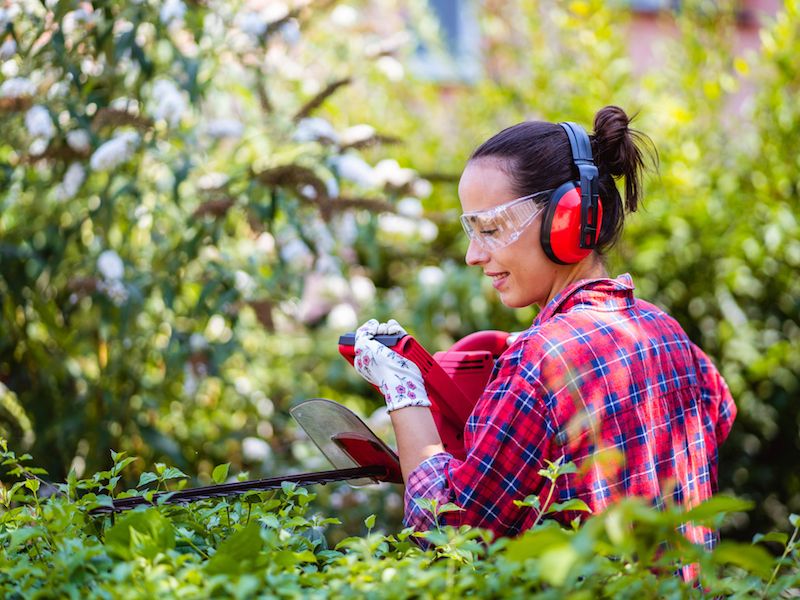Protecting your hearing is similar to eating right. It’s difficult to know where to start even though it sounds like a smart idea. This is particularly true if you don’t think your daily environment is particularly noisy and there aren’t any noticeable dangers to your ears. But everyday life can put stress on your ears and your senses, so practicing these hearing protection techniques can help preserve your auditory acuity.
If you want to keep enjoying the sounds around you, you need to do everything you can to impede down the deterioration of your hearing.
Tip 1: Wearable Hearing Protection
The most simple and sensible way that you can safeguard your hearing is to protect your ears. This means taking basic steps to diminish the amount of loud and damaging noises you’re exposed to.
This means that when it’s warranted most people will want to wear ear protection. Hearing protection commonly comes in two basic forms:
- Ear Muffs, which are put over the ears.
- Ear Plugs, which are put in the ear canal.
Neither form of hearing protection is inherently better than the other. There are benefits to each style. What’s significant is that you find some hearing protection that you feel comfortable with.
Tip 2: Know When Sound Gets Harmful
But how can you be sure when to use hearing protection? Noise that is painful is commonly considered harmful. But honestly, noise can start to damage your ears at a much lower volume than you might expect. After only a couple hours, for example, the sounds of traffic are enough to damage your hearing. An important step in safeguarding your hearing, then, is recognizing when sound becomes dangerous.
The following threshold is when sound becomes harmful:
- 85 decibels (dB): After about two hours this level of sound is damaging.This is the level of sound you’d expect from a busy city street or your hairdryer.
- Over 100 dB: Your ears can be very rapidly injured by this. Injury is done in around thirty seconds with noises above this threshold. For instance, jet engines and rock concerts will damage your ears in 30 seconds.
- 95-100 dB: This is about the sound level you’d expect from farm equipment or the typical volume of your earbuds. This volume of sound becomes harmful after 15-20 minutes.
Tip 3: Use Your Phone as a Sound Meter
We can take precautions to minimize our exposure, now that we have a concept of what levels will be harmful. But in everyday life, it can be difficult trying to gauge what is too loud and what isn’t.
That’s where your smartphone can become a handy little tool. There are dozens of apps for iPhone, Android, and everything in between that turn your device’s microphone into a sound meter.
Having a live sound meter with you will help you measure everything you’re hearing in decibels, so you’ll have a much better concept of what harmful levels actually sound like in your day-to-day life.
Tip 4: Monitor Your Volume Settings
A smartphone with earbuds is normally the way people listen to music these days. Your hearing is put at risk with this combination. Your ears can be considerably damaged if you keep your earbuds too loud over a long period of time.
So keeping an eye on the volume control means safeguarding your hearing. You should not raise the volume in order to drown out noises elsewhere. in order to make certain that volume doesn’t get too loud, we recommend using volume settings or app settings.
Earbud use can become a negative feedback loop if your hearing starts to wane; in order to make up for your declining hearing, you could find yourself continuously rising the volume of your earbuds, doing more damage to your ears in the process.
Tip 5: Have Your Hearing Examined
You may think of a hearing test as something you schedule when your hearing has already started to decline. The difficulty is that it’s not always easy to identify a problem in your hearing without a baseline to compare results to.
Acquiring data that can be used for both diagnostic purposes and for treatment can be best accomplished by scheduling a hearing examination and screening. This will give you some extra perspective for future hearing decisions and ear protection.
Pay Attention to Your Hearing
In an ideal world, protecting your ears would be something you could do continuously without any problem. But challenges are will always be there. So protect your hearing whenever you can, as often as you can. Also, get routine hearing examinations. Put these suggestions into practice to improve your chances.





